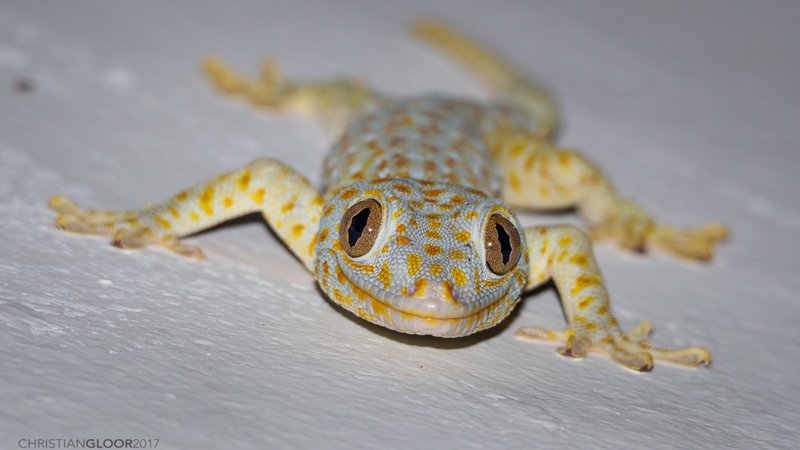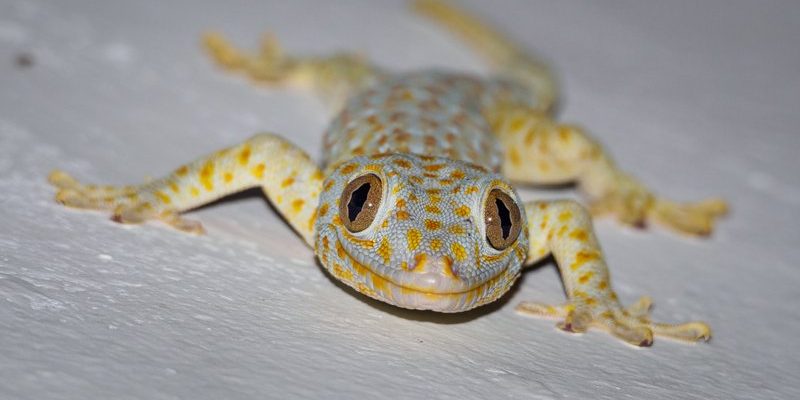
Tokay geckos, or *Gekko gecko*, are more than just pretty faces. These lizards are native to a range of regions, thriving in warm, moist environments. They’re not just limited to one location; instead, their reach stretches from the coasts of Africa to the islands in the Pacific. So grab your explorer’s hat, and let’s explore where they call home.
Historical Habitat of Tokay Geckos
Tokay geckos have a rich history that begins in Southeast Asia. They’re primarily found in countries like Indonesia, Malaysia, Thailand, and the Philippines. Each of these areas provides the ideal environment for these lizards, with plenty of trees and insects to keep them nourished. You might be wondering where the name “Tokay” comes from. It’s actually derived from their distinctive call, which sounds a lot like “to-kay!”
In the wild, Tokay geckos prefer tropical and subtropical forests. These locations are humid and offer plenty of hiding spots, making it easy for them to ambush their prey. They can often be spotted on tree trunks or even on the sides of houses, basking in the sun or waiting for a juicy insect to pass by. Some populations have even adapted to urban environments, showcasing their resilience.
Geographical Range of Tokay Geckos
Overall, the geographical range of Tokay geckos extends far beyond just Southeast Asia. They can also be found in parts of South Asia, including India and Sri Lanka. In these regions, they tend to stick to similar habitats—high humidity and plenty of insects. Imagine walking through a lush, green landscape with trees towering overhead; this is exactly where you might find them.
Interestingly, Tokay geckos have also been spotted on several islands in the Pacific, such as Micronesia and Fiji. In these places, they’ve adapted to a variety of habitats, from dense jungles to coastal regions. The adaptability of Tokay geckos is quite impressive, allowing them to thrive in different environments.
Life in Urban Areas
You might be surprised to learn that Tokay geckos are not just creatures of the wild. These lizards have been increasingly spotted in urban areas, especially in countries like Thailand and Malaysia. Cities provide a unique environment where food sources, like insects, are plentiful due to garbage and other human activities.
In urban settings, Tokay geckos often find refuge in gardens, parks, and even buildings. Their ability to thrive alongside humans is fascinating. Imagine coming home after a long day and hearing that iconic “to-kay!” echoing outside your window—it’s a reminder of the wild right in your neighborhood. Plus, they can help control pest populations, eating mosquitoes and other insects that bother us.
Tokay Geckos in Introduced Habitats
Believe it or not, Tokay geckos have also made their way to non-native areas due to human activity. They’ve been spotted in places like Hawaii and even parts of the southern United States. These introductions usually happen through the pet trade or accidental transport. It’s a bit like stowaways hopping onto a ship and ending up in a new land.
In these introduced habitats, Tokay geckos can sometimes become invasive. They thrive in warmer climates, and without natural predators, they can disrupt local ecosystems. Their adaptability once again shows just how incredible these lizards are. However, it also raises concerns about their impact on native species.
Conservation Status and Threats
While Tokay geckos are quite adaptable, they do face some threats. Habitat destruction due to deforestation and urbanization poses a significant risk. As more forests are cleared for agriculture or development, these lizards lose their homes. You might see them darting away as you walk through a jungle, but their numbers can dwindle if their habitats continue to shrink.
Moreover, the pet trade can also pose challenges for Tokay geckos. Many are captured from their natural environments for sale as exotic pets. While this can be seen as a way to appreciate these lizards, it’s essential to ensure that their populations are not depleted in the wild. Conservation efforts are crucial to keeping their numbers healthy.
So, where are Tokay geckos found around the world? You’ve discovered that they hail from Southeast Asia and have spread to various regions, adapting to urban life and even introduced habitats. Their vibrant colors, unique calls, and fascinating behaviors make them a remarkable part of our planet’s wildlife.
Whether they’re nestled in tropical forests or making a home in urban jungles, Tokay geckos remind us of the beauty of biodiversity. By understanding more about their habitats and the challenges they face, we can appreciate these creatures even more and contribute to their conservation. So next time you hear a Tokay gecko call, remember the journey it took to get there!

